by Carolina Morning | Jun 9, 2017 | Movement Therapy
Let’s face it—most of the time the office is the last place we would like to be. We associate the office with things like: ‘stifling’, ‘stuffy’, ‘confining’, ‘cramped’, ‘stuck’. Most suicides happen on Monday morning. We like to ‘escape’ from the office. Just like the frustration of sitting in traffic causes ‘road rage’, sitting in the office actually causes ‘office rage’. Much of the anxiety and job dissatisfaction in America could be directly traced to the environment. Studies consistently link optimal learning with comfort, relaxation, happiness. Epidemiological survey data shows that only twenty percent of Americans adults are flourishing. More than half of us feel like we are just going through the motions in our life.[citation needed The Science of Positivity ]
I have discovered that the office can be turned into an incredibly fun place to be. It may not become what we think of as our ‘happy place’—like a field of wildflowers, a sandy beach, or a waterfall—but it has vast untapped potential for bringing us more joy and balance into our lives. When set up with movement and comfort (I mean cozy comfort) built into the design, the office can turn ‘work’ into ‘play’.
My loose set of ideas came together when the laptop computer came into vogue. The changes happening in the work force and the office setting have been phenomenal in the past 10 years. More people are working from home, the laptop is becoming the standard norm even for everyday use.
Stuck at a desk job? So was I. After all those years of compulsory education, then college, I had had my fill of sitting. After college I soon found out there was practically no job that didn’t require hours and hours of sitting at a desk. I kept thinking—is this what life is all about?
After many years of study in anthropology, body mechanics and design, I started tinkering with alternative ideas. I broke objects down into functions. Instead of trying to make a better desk or chair, I asked the question ‘what is a desk/chair and what is it’s function?’
The standard desk is considered a surface upon which to set things like papers, books, and computer. The chair is then necessary as a way to put your body where you can do something with the things you set on the desk. When you break down the function like that, you can then ask the question: is there another way to achieve the same goal? While ergonomics experts myopically focus on the sit down workstation, spending millions of dollars per year to make microscopic improvements in chairs, keyboards, and the angle of the screen–I have abandoned that altogether. Instead of the office as a desk and a chair, I have designed an office that is a set of interactive furniture that allows the body to shift from one position to another without interrupting the work flow. It’s almost like being at a spa. Each different position and the movement in-between simultaneously stretches and tones the body, burns calories, massages, restores energy, and provides a sense of relaxation and well being that leads to maximum motivation and productivity.
Wa La! No more sitting still for me. My office is now a series of props and gadgets that allow freedom of movement all day even while I work.
Sitting down doing paper or computer work is a great way to get stuck in your head. We are a society living outside our bodies. According to Reichien Therapy–energy, vitality, chi, orgon energy, circulation, inspiration—whatever you call it—is the result of being present in the whole body, being in the flow. This can be measured with EEG. How many times were we told, ‘Sit still!’ In other words, sit still, inhibit your innate desire to move, do not express yourself through body language like wiggling and stretching, dampen your enthusiasm, learn how to stuff your feelings and get on with the serious work of becoming a boring adult.
Moving the body activates thought processes in the brain which stimulate the flow of creativity. Why do you always have that great breakthrough when you are either in the shower or riding your bike? It has to do with the breathing and movement and brin waves resulting. Just imagine combining the gym or playground, the spa, and the office into one setting. Relaxing, stimulating, exhilarating, calming, nurturing, empowering, freeing yet promoting the most intense ability to focus.
The Dynamic Office or Health Spa Office is not my creation. I simply observed the way people really behave when they are working at home, the beach, hotel, or in the park, and couldn’t help but see the desk was not where it was at. People like to lay in bed and surf the net, just the way they like to watch TV. They lay flat on their stomachs on the floor. They stand at the counter. My contribution is 1) to design furniture which puts the body in a more aligned position than anything else out there and 2) to put this furniture which allows these relaxing and natural positions into the standard office. Just build them right in and treat it as normal. No guilt for looking lazy or being different. It’s sort of like the time someone suggested the Earth wasn’t flat. Well, neither is the office.
Stress is so prevalent in today’s world it is almost considered a given. If you go around with a smile on your face relaxed and at ease, you will probably stand out in a crowd. Stress and breathing are intimately linked. When we feel stress, we hold our breath or breathe shallowly. It is a vicious cycle. The shallow breath creates fear and panic. And panic and fear create shallow breathing. Stress can be consciously controlled through the breathing process. Breathing can be used to change the body’s response to stress. Today’s modern lifestyle of sitting in an office, sitting in a car, and sitting in meetings contributes to the problem. Chair sitting hampers the breathing process by collapsing the chest and lungs and immobilizing the body for long periods of time.
It doesn’t have to be this way. Movement is freeing and relaxing, exhilarating and releasing, therapeutic and calming at the same time. These are the types of things we normally think of getting at the yoga studio, the spa or at the psychotherapists office. In this way, the office can actually become a powerful tool for breaking out of the vicious cycle of stress and confined movement built into our society.
In this new paradigm, the whole room is the desk. Various props support you and your materials so you engage in a dynamic interactive process. You are encouraged to move into different positions. Instead of placing things in a way that causes the least movement, they are placed to encourage movement. Not the kind that is wasted and repetitive, but the kind that feels good and provides relief from one static position.
Of course the Dynamic Office is not going to solve all your problems. And you may be skeptical about the claims made here. Until you’ve tried it, you won’t appreciate just what this design concept can do for your comfort, productivity and well being. And most people squirm when I mention standing up at their desk. The reason this system is so rejuvenating is that while standing up takes physical effort, especially when one feels weak or tired, it plays off of the other positions. When too tired to stand, any of the three other positions can restore energy. When one feels rested, one is naturally inclined to use one of the more active positions such as standing. I have found that if I remain in the more passive positions (such as reclining or lying face down) past the point I am feeling restored, it becomes uncomfortable. So transferring from active to passive and back again, as needed is the essence of the Dynamic Office. This is what provides body and mind with what it needs at any particular time. It also creates a sense of relaxation just knowing that you have options, and you can control your environment at a whim. You aren’t ‘stuck’ at a desk, which creates stress on the body. On the other hand, using the lounge position actually provides many of the benefits of taking a nap. It puts the body in such a state of relaxation that you can actually work and restore energy at the same time.
Depending on your mood, state of energy, and current project at hand, each position offers an optimal opportunity to bring out your best at that time. For unknown reasons, I find that I am drawn to one of the four positions which allows either the stimulation or relaxation I need at that time. Personally, I tend to use the stand up position by default, as it provides a workout and the most ability to move around while working. If I am feeling not quite up to that, I use the Active Sitting position (in my case the Zen Office™. I can be practically comatose from either a late night or having just got back from a long bike ride–I use the lounge position. It looks like I’m being lazy (and feels that way), but the funny thing is I’m still working. The lying face down position is also great when feeling extremely tired, especially for things like reading in bed. I NEVER sit at a table to read (unless it’s a short period or time.) For me, serious reading is a reclining activity. I use every means I know of to restore my energy so I feel better and so I can get more things done.
Here are some guidelines for turning your office into a health spa:
1) Set up your space so you can utilize the four basic positions:
standing, dynamic sitting, lounging, lying down.
2) Engage the process of body awareness and mindfulness. Take some training in the somatic arts such as yoga, The Alexander Technique, Feldenkrais, dance or whatever. There are many online resources and videos such as on U-tube to help you get started and find practitioners in your area. The idea is to wake up parts of our bodies and psyches that have become dormant or asleep.
3) Make the floor a nice place to hang out. This is best done by providing a clean surface. Something inviting—not a synthetic carpet or cold tiles. Tatami mats are real nice for this. Use the floor for things like spreading out papers where you need more room than the minimalistic eco-shelf allows. Of course if you have limited flexibility or other issues the floor may not be an option. Then create an adaptive setting. For instance, a flat platform (like a platform bed) at the height of a couch would provide a floor like surface that is raised.
4) Take off your shoes. Part of this office is putting the body in natural alignment. Shoes are confining and don’t allow the floor sitting and other movements. Use a Footsie Roller to improve the alignment of your feet. If the feet and legs get tired or achey, simply switch positions. Gradual toning and fitness will result. “Flat Feet” do not get in the way of making this concept work. In fact, this can alleviate the “flat feet’ issue altogether. A very therapeutic ‘mat’ for problem feet is to build a small sandbox to stand in while using the Eco-shelf™ stand-up-computer-desk.
5) As much as possible, move and stretch in-between other activities. Pacing is very good for reducing tension. Use floor activities as times to get some stretching in.
6) Equip your office with toys such as yoga props, mini trampoline, dumb bells, stationary bike, Om Gym, etc. When you are in between thoughts, talking on your speaker phone or waiting for a website to download, go to one of your favorite activities instead of just sitting motionless waiting. When you are trying to get just the right phrase for your story, do one of these activities until you have that ‘Wa la’ moment.
7) Personalize your office. Consider a calming environment that invokes a feeling of peace and serenity. Wall hangings, fountains, objects from nature, mirrors. Play calming music and sounds of nature. Of course, this is a suggestion only. Whatever fits your tastes works.
8) Set aside some time each day or each week to maintain the orderliness and improve the functionality and aesthetics of your space.
9) Use natural lighting whenever possible and otherwise incandescent lighting. Fluorescent light disrupts the body’s circadian rhythms. There is ongoing debate about which is best for the environment. But as far as health, fluorescent lights zap energy and rob us of needed nutrients which natural daylight provides.
10) Whenever possible, take meetings or conversations while walking (outside the office).
11) If privacy allows, use a speaker phone. It allows maximum movement while talking and holding the handset to the ear is hard on arm and shoulders.
by Carolina Morning | Sep 3, 2016 | Movement Therapy, Sleep Therapy
If you’ve had a big day and you need some time to unwind and read a book or watch a movie–chances are it’s not going to be sitting at a desk or table. Who doesn’t love to cuddle with an interesting book and cup of tea on the bed or couch? And chances are you haven’t really found a comfortable position. You can prop yourself with pillows all you want, but at best, some part of your body–neck, back, arms–is crunched and you can’t really relax 100%. At the worst, you can develop injuries from repetitive strain.
I found an interesting struggle happening on a reading blog, where serious readers were talking about their favorite positions
1–propping oneself in a sort of lounge position with pillows against the wall or headboard
2–on the side
3–on the back (a–holding the book straight up with arms or b–propping head forward with pillow, bending knees and putting book on knees)
4–on the tummy (a–with elbows propping head up or b–with head hanging over edge of bed and book on floor)
Not a ONE of them felt like they had found it.
I have discovered outside-the-box solutions for this age-old dilimna, by incorporating principles from restorative yoga, Alexander Technique and other modalities. It often looks like I’m not working when I’m busy on the computer, writing, or reading something because I am SO COMFORTABLE. I find myself apologizing sometimes, but there’s no reason why anyone can’t adopt these life changing habits which bring relief and make reading and writing, and using the laptop more fun.
The blog I reviewed had dozens of comments from frustrated people who could not find a comfortable position for reading in bed. The dozens of comments can pretty much be summed up in this one:
“I read for long periods, so I suppose it’s natural I do a combination of all the positions mentioned above. I lie on my stomach first until my lower back begins to hurt, then gingerly roll onto my right side until my arm hurts, then on my back until my hands get sore from holding the book up, then onto my left side. By that point, I’m usually numb enough to fall asleep.”
The fact that this person is changing positions is a good thing. But the fact that he is changing positions because not ONE of the positions allows and promotes good alignment, circulation, breathing and comfort is an issue.
F.M. Alexander–in his book Constructive Conscious Control of the Individual–gives primary reading directions.
I wish to free my neck so that
my head can go forward and up
so that my torso can lengthen and
my legs can move away from my torso
and my shoulders can release out the sides.
Mark Josefsberg-Alexander Technique Teacher in NYC further explains:
“When you look down, think of pivoting your head from the top of the spine, which is higher up than we usually imagine. Think of a rod going through your head at the level of you ear holes, and pivot your head down and up from there, without collapsing your neck forward. Don’t forget to use your eyes to look down.
An Alexander teacher will help you understand these, both intellectually and kinesthetically.
Reading and using the laptop for more than a few minutes, while laying down or reclining, can create problems for our bodies. The media loves to promote images of people doing so without props, however, the truth is: props are necessary to prevent damage to the body. These props can be simple or more complex, but the difference is like night and day.
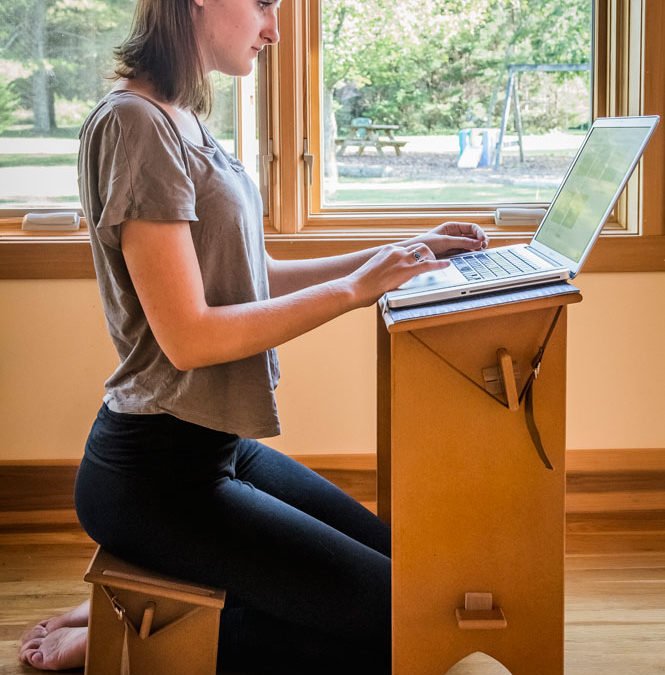
by Carolina Morning | Sep 3, 2016 | Movement Therapy
Note: This article is most useful for people who have some experience with natural sitting. If you want to learn how to get started, see The Art of Natural Sitting.
Most modern furniture puts us in unhealthy positions which contribute to poor health and back pain. The alternative is furniture which puts you in healthy aligned positions which energize, tone and restore you as you work.
Natural Sitting (a.k.a. Active Sitting) for most of us is a radical new way of doing things. There are many challenges to getting started, and most of them can be remedied with a little knowledge and perspective. The good news is, there are enough intrinsic rewards, despite the challenges, that make it satisfying even in the beginning. Here are some of the common issues that come up in the early stages of making a switch to natural sitting:
- Fatigue
- Back/neck pain
- Circulation being cut off in feet and/or legs (numbness, tingling, legs and feet falling asleep). Sciatica will be discussed here as well.
- Arthritic type pain in knees, hips, and other joints. Aching, soreness. Inflammation.
FATIGUE
When we say “active sitting” and “interacting with your environment:, we mean it. Alignment (symmetry), flexibility and tone are the main factors at play here. If you have been using a chair your whole life, your body is going to be out of alignment. Just like wearing shoes….you have been ‘wear’ the chair.
Also you won’t even know what alignment feels like. Look at a tree on top of a wind-swept mountain. All the branches grow on one side—the leeward side. That tree has had to adapt to the extreme influence acting on it. That is similar to a human body that has sat in a chair for many years. The muscles of the chest, abdomen, back, and neck have had to pull mostly in one direction—frontward. Physical therapists call this “front loading”, and in extreme cases they think of it as a pathology. Recently is has been recogniced that that: 1) it is caused by chair sitting, and 2) most of us have it.
In front loading, the muscles become tighter (shorter) on the front of the body than the back. This isn’t necessarily visible (as far as muscle tone), as most muscles involved in sitting are deep. Other things follow. The muscles pull the head and neck forward, creating “kyphosis”. The fascia, bones, tendons and muscles work together to hold the body in an imbalanced, out of alignment position. We get used to this. It feels normal. We have ADAPTED to the chair like the tree has adapted to the wind on the mountain.
So when we transition into natural sitting, it will be more difficult at first because we are needing to work with the body as it is – unadapted to the new (though natural) environment. The good news is, the human body is flexible, resilient, and responds to change. However front-loaded it is, it is still more suited to its primal nature than to the Western environment it has adapted to. By putting yourself in the natural sitting position, you will both balance and tone the muscles used in sitting.
However, like any new exercise program, a common sense sequence of activity and rest will be needed. Few people can jump into it 100% from the get go. Alternating natural sitting with chair sitting, gradually increasing the time spent in natural sitting, will eventually establish the desired combination of alignment, flexibility and tone needed to easily sustain natural sitting 100% of the time. It can take from days, to weeks, to months, depending on the factors with each individual.
Let me qualify what I mean by “100% of the time”. Upright sitting is only one activity out of many we perform during any given day. The human body was not designed to remain in any one static position for hours at a time, except perhaps during sleeping—but even that has its limits. Natural sitting should be combined with other positions: standing, reclining, walking, etc. When the back gets tired while sitting, for instance, shifting to another position sometimes solves the fatigue—by engaging a different set of muscles. Sometimes a little stretching or walking will help, other times reclining or simply resting the back a few minutes is what is needed.
It is possible and optimal to avoid chairs altogether if you have some form of lounge chair work station. This could be in the form of a standard lounge chair, Chaise Lounge, or something designed for a bed or couch like the Eco Backrest™.
Part of health is muscle tone, and muscle tone develops when the muscles are engaged and stimulated regularly. In other words, “use it or loose it.” Most of us have lost it. But we can get it back. And this has nothing to do with working out in the gym and building hard ‘abs’. Traditional calisthenics and exercise machines – even the popular Pilates system – work on the large outer muscles in an imbalanced way. This type of calisthenics usually has a contracting effect, making natural sitting even more difficult. The important muscles used in sitting are finer, deeper, actually connected to the bones. The principle muscle activated during sitting, the psoas, has very little sensory enervation. ‘Feeling’ the psoas directly will usually be more an act of imagination than of attention. Psoas function can be perceived indirectly: ‘widening the back,’ and ‘knees forward and apart’ are both clear descriptions of the effect of improved psoas activity.
There is often confusion between ‘contraction’ and ‘shortening.’ Muscles lose their resting length through atrophy. Attempts to stretch or ‘relax’ shortened muscles are often mistaken. Shortened muscles recover their length through use, not passive stretching or ‘releasing.” The more symmetry, balance, and alignment in the body, the less the muscles will need to work during natural sitting. Natural sitting in itself tones the muscles involved in sitting. Natural sitting integrates exercise with everyday activities. So what we are aiming for is symmetry (alignment), tone, and flexibility.
We will each be battling not only our own front-loaded bodies, but also social norms and the public environment which wants to keep us in chairs. Sitting in a chair makes us look busy and hard at work. However, the most productive position besides autonomous sitting is lying down. Lying down in either a flat position or reclining position rests the back so it will be ready for some more sitting. How can you lay down when you are working at a desk or computer? There are many creative ways to work in both standing and reclining positions. Many desk type activities can be accomplished just as easily in another position. See “How To Turn You’re Office Into a Health Spa” for more on this.
But until you evolve your own office set-up with chair-less props and furniture, the only option is to alternate between autonomous sitting and chair sitting. The only problem with this is that the chair sitting works against the efforts to re-educate and re-align the body. But still, it can be done, and gradually the natural sitting will become easier.
The yoga and meditation community has revived natural sitting at a cultural level. At least during meditation and dharma talks or satsang, the norm is autonomous sitting. There can be hours of sitting, and anyone who has experienced a meditation retreat will testify to the difficulty of sitting for so long. Walking goes hand in hand with sitting meditation, as many traditions have pilgrimages and walking meditations as integral to their practice.
However, these contemporary settings are not immune from their own social norms, where it is considered disrespectful to slump or recline. Many yoga and retreat centers have resorted to using a canvas covered back rest which mimics the chair–only at the level of the floor. This is not a solution, and from the standpoint of the New Ergonomics–is actually worse than most chairs. This backrest, rounds the back. It does not support the head and neck, which must therefore jut forward in an attempt to balance the body’s center of gravity that has gotten thrown off. Another quick fix is a type of harness or sling that straps around the lower back and attaches to the knees. This too is another way of mimicking the chair’s classic right-angled sitting position.
The best solution to sitting when the body is too tired to hold itself up without back support is true reclining. This means leaning back, as though you were in a chair, only your neck and head are supported. This position allows total rest for all the muscles, so they can recuperate from physical activity and be ready for more natural sitting. The “yoga lounge” which is a combination of bolsters and pillows borrowed from restorative yoga–could be used in many of these reclining activities. But even better is the new Eco Backrest™ which stays up better and has adjustable angles. When reclining isn’t an option, another solution is just leaning back lightly against a verticle surface such as a wall. This slight bit of support can do wonders to the comfort level. The Eco Backrest™ has a verticle setting for just this purpose. It can be used in conjunction with a zafu so back support is available when needed.
Since reclining is not acceptable in most yoga and meditation groups, the best solution is standing. When the sitting becomes too much, stand in place, right in front of where you were sitting. Then sit when you are ready again. Use the time in-between the formal meditations to lay down in your room and rest your back, or do restorative yoga poses.
BACK and NECK PAIN
You will be engaging some muscles that you haven’t used much. This can cause pain—from sore muscles. Also, the bones and ligaments are effected. Everything moves together. This way of sitting—and living—will start to wake up parts of the body that have been dormant or asleep. The body likes to stretch and bend, breath and move. You will feel tight spots, stuck places, cramps, tingling, numbness and other sensations. Congratulations! You are becoming aware of your body, tuning into its needs, reawakening its innate wisdom.
Reichian growthwork therapy, craniosacral therapy, somato-emotional release work and other healing modalities would even go so far as to say emotions are stored in the body (as “tissue memory” or “body armor”). These emotions can be released when the body is stimulated, loosened and re-aligned, thus freeing up energy also called ‘chi’, ‘prana’, ‘kundalini’ which leads to greater presence of being, flexibility and vitality.
Making changes towards natural sitting can have emotional repercussions. The patterns of thinking that have been ingrained in one’s consciousness since birth and are also ingrained in one’s body. Now these patterns are being challenged and threatened. Using the body differently may stir up resistance while one is overcoming the inertia of habit. It also may stir up other emotions the way bodywork therapies can. Sitting is a ‘loaded’ subject. Nobody wants to think the truths they have followed forever and taken as fact are flawed. It usually requires a person encounters some impending reason for change, such as physical pain or a desire for greater health or higher states of consciousness.
Movement Therapies like stretching, yoga, massage, Rolfing, chiropractic, craniosacral therapy, Reichi, walking, swimming, crawling, climbing, surfing, Alexander Technique, Feldenkreis–will help you get through the transition as well as become a regular part of your lifestyle. This is important to get the body initially into alignment so when you sit things are working together.
Sometimes pain people experience when they start natural sitting is pain they didn’t know they had because they didn’t try to put their body into alignment before. An asymmetrical body will not necessarily correct itself on its own. In fact, from the view of craniosacral therapy, people hold trauma in the body from birth to death if not corrected.
The first place most of us feel pain is the lower back. There are several yoga asanas to relieve this tightness. They are safe, simple and almost anyone can do them. Standing while bending toward the toes, standing while bending backwards arms over head, the whale (use a smile cushion or zafu), the cobra, hanging from a bar (decompresses the spine), twisting asanas, inversion therapy, massage.
Some pain can be remedied with simple stretching, but often some other remediation is needed. Natural sitting alone won’t correct all structural issues, but will work hand-in-hand with other therapies to get the body aligned faster and keep it there once alignment is achieved. Bodywork therapies can move us into alignment quickly and compliment our other work. And besides—it feels great.
For Active Sitting, the height and angle of your sitting surface should allow a 130-180 degree leg to spine angle. The lower the seat, the less the leg-to-spine angle. If the seat is too low and the leg-to-spine angle too small, for most people this will result in flattening the lower back (kyphosis–uneven pressure on vertebral disks) and too much effort from the muscles in front (or front loading). The neck will tend to jut forward as if chair sitting. If the seat is too tall, you will tend to slide off–or the front edge of the seat will run into the under side of your thigh–or there will be too much bend in the lower back (or all three). Look at the photos below to see examples of too low, too high, and just right. Any strain either front or back will usually result in some form of back/neck pain.
Besides having the right seat, one needs to also use it correctly. Even with the perfect seat at first we tend to hold the body in a position it is used to, with the neck jutting somewhat forward. Sit next to a mirror and see if your head, neck and back make one line together. Or just simply observe yourself, and how you feel. Also, ask a meditation or yoga teacher or someone else familiar with the somatic arts for advice. If you stand in Tadasana “standing like a mountain”—with legs slightly bent, feet shoulder distance apart, arms to the side loosely–use a wall to see how in alignment you are. Is the back of your head touching the wall, your buttocks, and your middle back? Now take this position and move into a seated position on a zafu, smile cushion, tilt seat, or Peace Bench. Can you keep the head-neck-back together as one unit, lined up together? Just for comparison, try to move from Tadasana to sitting on a regular chair. This is a very sensory way of feeling the benefits of natural sitting. You can use this technique as often as you like to see how your sitting is doing. Another useful exercise is to lie on a firm surface such as a rug or floor without a pillow. (Something under the neck is okay, but the back of the head should be on the same level as the back.) For most of us this will be impossible at first—to feel comfortable without a pillow—but this is the way it would feel if the head, neck, and back were in alignment.
LEGS/FEET FALLING ASLEEP/NUMBNESS/TINGING/CIRCULATION ISSUES
When a leg or foot “falls asleep” some combination of veins or nerves and/or capillaries have been pinched. Ironically, this can sometimes be caused by a seat that is too soft. You should be able to feel your ishials—or sit bones–on the seat surface. If not, the muscles get pushed into by the seat or cushion, which cuts into the nerves, capillaries and veins. If this is the case, you need a more firm cushion or bench and/or one with a wider and flatter surface. Play around with different seats to see what works. The wider and flatter the sitting surface the better. This spreads your weight over a broader area, so no one area is getting most of the pressure. Another factor which causes circulation impairment is a seat that digs into the bottom of your thigh, caused by a seat that is too tall.
Circulation issues can also be effected by factors other than the type of seat and sitting technique. One of those factors is the body’s ability to move blood and lymph to the extremities as well as clear wastes like lactic acid out. Katsuzo Nishi, an early health pioneer, developed a complete system for maintenance and recovery of good health based on a revolutionary theory about how circulation works. Nishi believed that the capillaries provided the true driving force of the circulatory system—not the heart and blood. And, in order to compensate for the obstruction of circulation in the four limbs resulting from the human species’ vertical posture, he proposed several exercises which stimulate capillary action—such as “Mokan Undo”, which involves lying on the back, raising the arms and legs and applying a slight vibrating motion, as well as a few others. Besides these exercises, Nishi also recommended methods making use of implements like a hard, half –cylinder pillow, design to keep the cerebral vertebrae in the ideal position from a structural standpoint and a flat sleeping platform (flat board) designed to do the same for the vertebrae of the spinal column. His ideas resonate with many of today’s practices in the somatic arts and New Ergonomics, reinforcing the fallacy of modern, overstuffed, over-built furniture, and how lack of movement leads to degenerative health. For instance, there are several “inversion therapy” devices on the market, including the Om Gym and the slant board. Many therapists recommend elevating the legs regularly—that means propping them on a pillow or chair while lying on the back. Restorative yoga uses many examples of inversion, including the one shown in the illustration to the right. And the buckwheat pillow—which has become popular in recent years–supports the contours of the head/neck without pushing the head out of alignment, similar to Nishi’s wooden half-cylindar pillow.
Sciatica is characterized by a shooting pain going up one or both legs. It is caused by some form of pinching of the sciatic nerve. Sciatica can be from mild to excruciating and has prevented many people from sitting. There are several approaches to dealing with sciatica.
1–Check your piriformis muscles. Bring knees to chest while
lying on your back and turn out one leg to rest your ankle over the knee
of your other bent leg and pull your knee to your chest. This stretches
the piriformis muscle.
2–Sitting cross legged (Indian Style) and leaning forward and to the left and right over each knee while leaning forward. Sometimes the Sciatica nerve splits the bundle of muscle we call the piriformis and if the piriformis is tight, your low back and sciatica will be sore.
3–Get someone to massage deep up along your inner pelvis muscles through your operator foramen (on either side of your anus area) and feel for tight inner pelvis muscles. Experiment by sitting in a chair and leaning to one side of the other from your center sitting position. Notice if you have a habit of tightening your inner pelvic muscles (butt muscles-sit bone area) to keep your self centered as you lean over. If you do, then relax your butt muscles and move or lean from your waist area, from your belly, with your belly relaxed.
4–If you keep your wallet in your back pocket, take it out and put it in your front pocket instead, or get a fanny pack, so you don’t displace your pelvis with the bulky wallet in the way of sitting centered.
ARTHRITIC TYPE PAIN/ACHING OR JOINTS
The most common area people have issues with this type of pain is in the hips, knees, feet and ankles. First make sure no added pressure is on these parts. In Burmese position, do not cross the legs, but make sure one foot—or ankle—is in front of the other. In kneeling position, place a rolled up sock or other small object under the ankles so the ankles have a bend, instead of having them flatten out. A seat which is too low can cause pressure on the hips.
When knee pain happens, it is sometimes because the hamstrings are tight. Some gentle, yoga type stretching of these muscles—on a regular basis–can often relieve knee pain. Also, sitting in a sky position or easy pose—on a taller seat–places less bend in the knee. This is often a great way to sit with persistent knee pain. This often helps with the hips as well.
When kneeling, to avoid pain in the ankles, place a rolled up sock between your ankle and the sitting surface. This will keep your ankles at the same angle as if you were standing, with no pressure from an extreme bend in the ankle. Also, hanging the feet off the back edge of the zabuton can work as well.
Arthritis can be caused by many factors: past injuries, heavy metal poisoning from dental amalgams and immunizations, and poor diet to name a few. This pain can prevent many people from natural sitting, and in this case will need to be handled from a nutritional and medical angle. Here is a great article on arthritis and what can be done to prevent and reverse the condition.
http://www.litalee.com/
If mild pain arises while sitting, sometimes a shift of position is all that is needed, such as extending one or both legs out for a few minutes. See illustrations for examples of ways to alter your position without completely disrupting your sitting. Sitting on either a Tilt Seat™ or other similar chair–or on a zafu placed on a stool–is a great solution for people with limited flexibility and pain when getting up and down to the floor.
With natural sitting, the benefits of exercise and movement can be extended from the yoga mat and gym into everyday activities. to bring new possibilities in health and well being.
Here’s an excerpt pulled from a blog:
Correct posture: ear should line up with shoulder, hip, and ankle when standing comfortably. Common muscle aches (knots in the upper back) can be caused by walking with the head forward. The average human head weighs 8lbs when aligned with the spine, your body doesn’t really feel that 8lbs. When you start putting that head forward, it puts strain on certain muscles in your upper back that have to constantly carry around those extra 8 lbs. The head supporting muscles never get a break, they’re constantly working out, much more than other back muscles. This leads to the head-supporting muscles (HSM) becoming significantly stronger than other surrounding and supporting muscles.
Since the HSM are then constantly working out- they’re in almost constant contraction, stretching out the other surround and supporting muscles that are no longer strong enough to counter the HSM contractions. In order to prevent tearing, the other supporting muscles go into a super contraction (ie knot) that can be very painful. Rounded shoulders are another symptom of poor posture. If you work out your chest and glamor shoulders (the front part of the shoulders) without also working out the back and supporting shoulder, you get a similar problem to the knots in your back. Basically your chest/shoulder muscles become too strong for the muscles in your back and supporting shoulder to keep your shoulders aligned properly.
When laying flat on your back, with your right arm at your side, the distance between the ground and the point part of your shoulder (where the collar bones meet), should be 1 inch. The most common rounded shoulder weak muscle group are the ones that pull you shoulder blades together. Rounded shoulder posture leads to a lot of shoulder grinding problems (things aren’t aligned properly, your joint cartilage suffers). Carrying around a heavy backpack naturally leads to both of these problems. As kids and through puberty you begin to walk with your head forward and naturally round your shoulders, and start associate this with “natural.” Realize its a problem now, look in a mirror, and start walking correctly. It will feel weird (really weird) the first day. After 3 days you’ll still slouch and whatnot, but it shouldn’t feel weird to walk correctly. Within a week, I’ve started noticing I’m naturally correcting my back almost without thinking. Be ready though, my back was really tired for the first 3 days (I suppose using muscles that I rarely use will do that).
Long plateaus in lifting (for the weight lifters), is ALMOST ALWAYS as a result of weak stabilizing muscles. If your whole shoulder is in shape, you can lift more with any specific part of it compared to part of your shoulder being weak and trying to lift that same weight
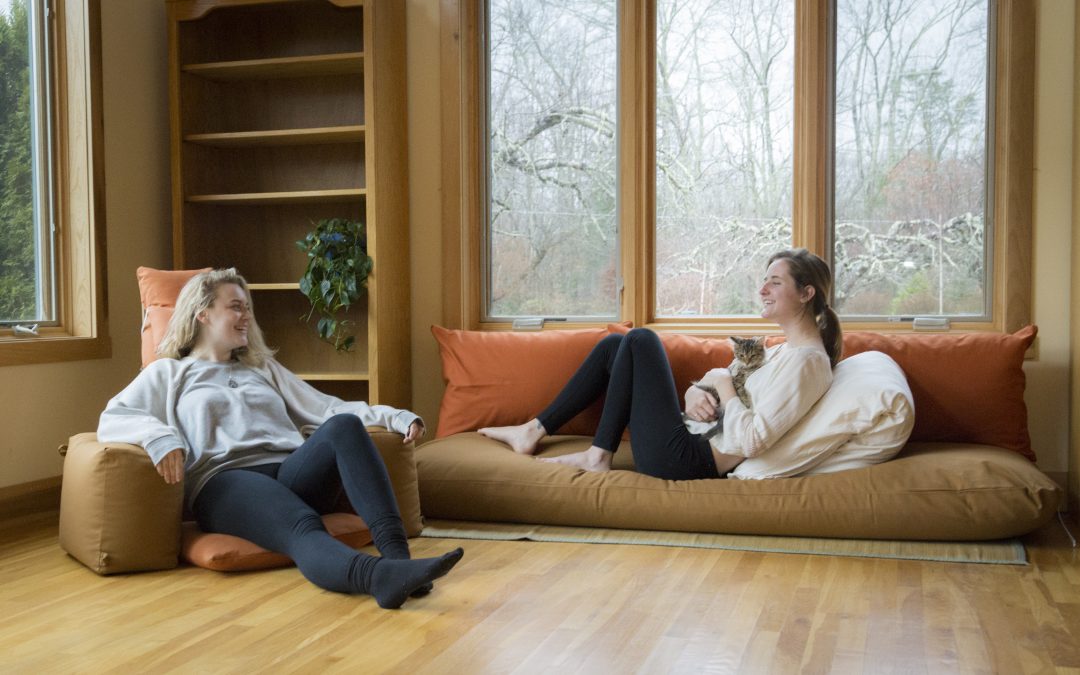
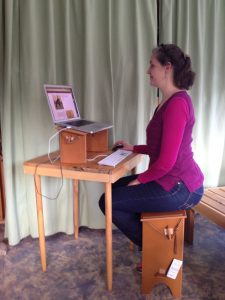
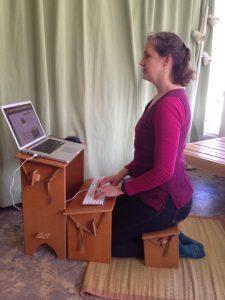
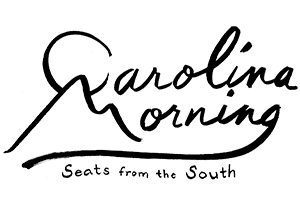
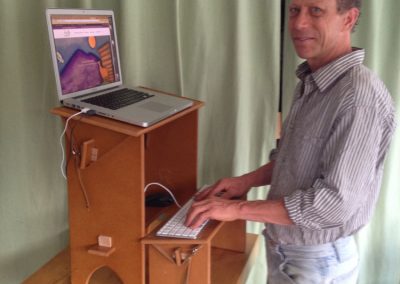
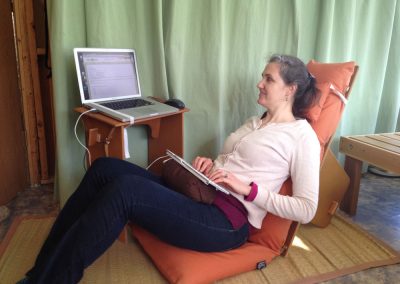
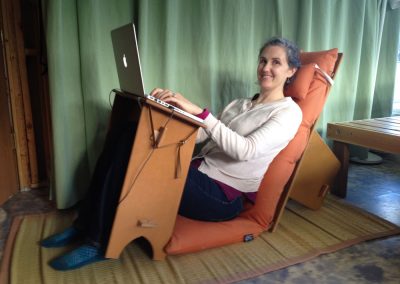
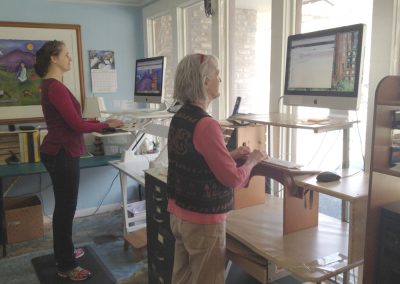
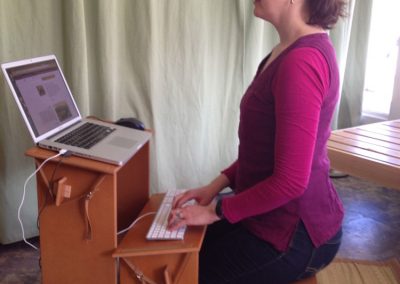
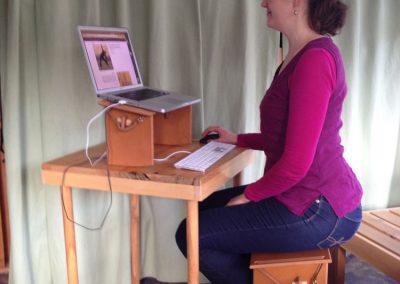
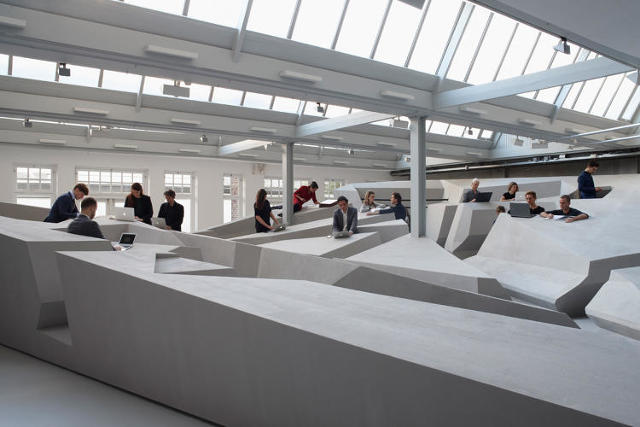
 This illustrates the point of this article: our body’s are being shaped by our environment. People are front loaded-meaning the muscles in front of the body are tighter than the back muscles and causing the body to hunch forward. So when a person who is tight in the front lays on his or her back on a firm surface, those tight muscles are being stretched. The firm surface doesn’t let the back sink in and bow the way our overstuffed furniture does. Rather the back meets resistance and it must stretch, and that stretch is what is perceived as uncomfortable. So a pillow which pushes the head, neck, and shoulders forward and out of alignment further bows the back, and could be perceived as “comfortable” because there is no stretching and realigning going on.
This illustrates the point of this article: our body’s are being shaped by our environment. People are front loaded-meaning the muscles in front of the body are tighter than the back muscles and causing the body to hunch forward. So when a person who is tight in the front lays on his or her back on a firm surface, those tight muscles are being stretched. The firm surface doesn’t let the back sink in and bow the way our overstuffed furniture does. Rather the back meets resistance and it must stretch, and that stretch is what is perceived as uncomfortable. So a pillow which pushes the head, neck, and shoulders forward and out of alignment further bows the back, and could be perceived as “comfortable” because there is no stretching and realigning going on. The advent of Stand Up Desks starting a few years ago have brought us one huge step towards a healthier lifestyle. Standing more during the day allows the body to unwind more naturally at night to be able to relax on a firm surface.
The advent of Stand Up Desks starting a few years ago have brought us one huge step towards a healthier lifestyle. Standing more during the day allows the body to unwind more naturally at night to be able to relax on a firm surface.

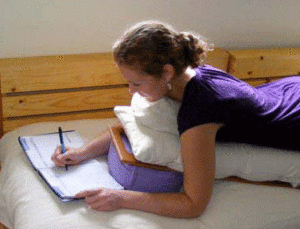
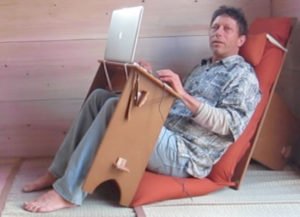
 is used by physical therapists for patients with coordination/ concentration issues and hyperactivity. If it works for special needs people it must work for other people too, to enhance clarity of thinking and attention span. It has been found that engaging the body in the sitting process like this enhances learning comprehension and retention. Have you ever noticed how you have a lot of your best inspirations while walking or in the shower? The same principle applies here. When the body is engaged in some form of movement the brain is activated. This is also called sensory awareness. This is what causes active sitting or other movement to stimulate the brain. And another factor is, this position lets more oxygen into the lungs which in turn increases brain power.
is used by physical therapists for patients with coordination/ concentration issues and hyperactivity. If it works for special needs people it must work for other people too, to enhance clarity of thinking and attention span. It has been found that engaging the body in the sitting process like this enhances learning comprehension and retention. Have you ever noticed how you have a lot of your best inspirations while walking or in the shower? The same principle applies here. When the body is engaged in some form of movement the brain is activated. This is also called sensory awareness. This is what causes active sitting or other movement to stimulate the brain. And another factor is, this position lets more oxygen into the lungs which in turn increases brain power.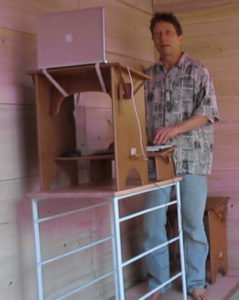 The keyboard is out of sight because it is so far from the screen. The challenge is touch typing when the keyboard is completely out of view. This takes some getting used to but gets easy with practice.
The keyboard is out of sight because it is so far from the screen. The challenge is touch typing when the keyboard is completely out of view. This takes some getting used to but gets easy with practice.